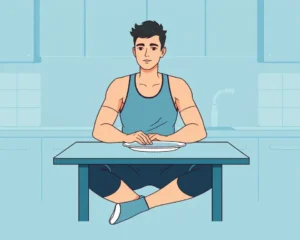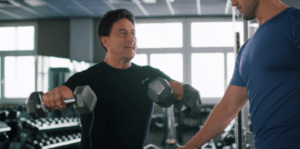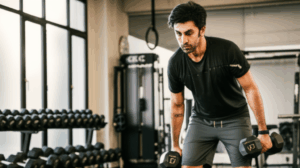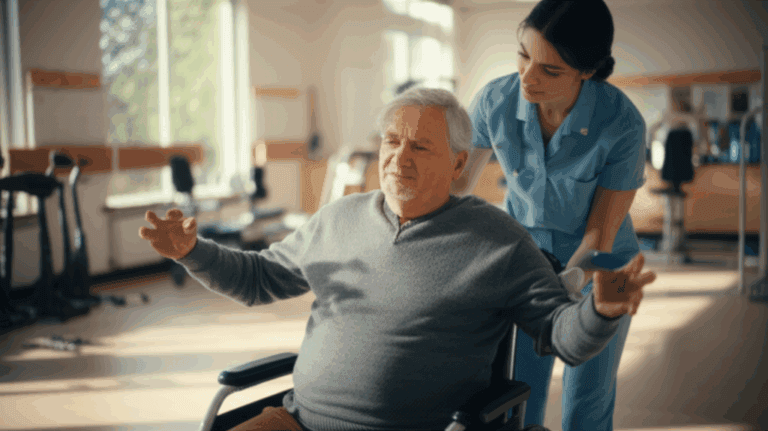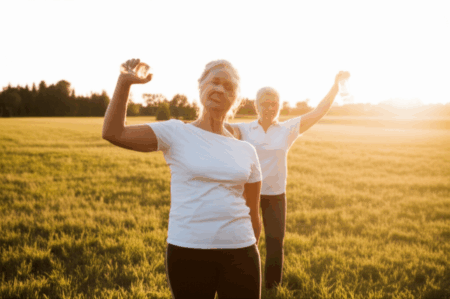A stroke can be a life-altering event, impacting not only physical abilities but also mental and emotional well-being. The good news is that exercise, a cornerstone of stroke rehabilitation, offers a powerful way to boost mental health alongside physical recovery. Recent research underscores the significant benefits of physical activity for stroke survivors, highlighting its potential to reduce depression, anxiety, and improve overall quality of life.
The Mental Health Impact of Stroke
Stroke survivors often face a range of emotional and behavioral changes due to the brain’s role in controlling these functions. Feelings of irritability, confusion, fear, frustration, anger, grief, sadness, anxiety, and depression are common. In fact, up to one-third of stroke survivors experience post-stroke depression. These mental health challenges can significantly affect a stroke survivor’s recovery, functional status, and overall well-being.
Common mental and emotional health issues faced by stroke survivors include:
- Persistent feelings of sadness or loneliness
- Restlessness and irritability
- Feelings of hopelessness, worthlessness, or helplessness
- Loss of interest in hobbies and activities
- Decreased energy and fatigue
- Difficulty concentrating, remembering, and making decisions
- Sleep disturbances (insomnia or oversleeping)
Exercise: A Two-Pronged Approach to Recovery
Exercise is a vital part of stroke rehabilitation, improving physical function and offering substantial mental health benefits. It can improve mood and ease symptoms of depression and anxiety by triggering the release of chemicals that boost mood. Regular physical activity can also improve functional recovery, muscle strength, motor movement, brain recovery, cardiovascular health, mood, and social participation.
According to Dr. Ramin Zand, a professor of vascular neurology at Penn State College of Medicine, physical activity is essential for stroke survivors to reduce the risk of recurrent strokes and improve mental health. He emphasizes that physical activity can reduce the intensity of depression and anxiety, “hitting two birds with one stone.”
Types of Exercises for Mental and Physical Well-being
A well-rounded exercise program for stroke survivors should include a combination of different types of exercises:
- Aerobic Exercise: Activities like walking, graded walking, stationary cycling, and arm ergometry improve cardiorespiratory fitness, walking speed, and endurance. Aerobic exercise can also improve cognitive abilities, balance, and overall quality of life. Aim for 20-60 minutes of moderate-intensity aerobic activity, 3-5 days per week.
- Strength Training: Resistance exercises using weights, resistance bands, or body weight can increase muscle strength and endurance, making everyday tasks easier. Stronger muscles can improve your ability to perform everyday tasks like walking, climbing stairs, getting on and off the toilet, lifting things and opening jars. Improved leg and core strength can also reduce the risk of falls.
- Flexibility Exercises: Stretching exercises can relieve muscle spasticity, improve motor function and range of motion, and prevent contractures. Flexibility exercises can also decrease joint stiffness and improve overall function. Hold each stretch for 10-30 seconds and perform stretches 2-3 days per week.
- Neuromuscular Exercises: Activities that improve coordination and balance, such as Tai Chi and yoga, can enhance activities of daily living, balance, quality of life, and reduce the fear of falling.
- Mind-Body Exercises: Practices like Tai Chi, Qigong, and yoga can significantly improve balance, limb movement, daily life activities, and reduce depression.
Here are some specific exercises that can be incorporated into a stroke recovery program:
- Weight Shifting: Standing with feet flat on the ground, gently shift weight from one leg to the other to improve balance.
- Hip Flexion Exercise: While sitting, slowly raise one knee towards the chest and lower it back down. Repeat with the other leg.
- Heel and Toe Raises: Lift heels off the ground and then toes to strengthen the ankle muscles and improve coordination.
- Seated Marching: While sitting, lift each knee in a marching motion to improve leg strength and mobility.
- Wrist Flexion and Extension: Slowly bend the wrist up and down while keeping the arm steady to improve mobility.
- Finger Tapping: Lightly tap each finger against the thumb in sequence to improve dexterity.
- Weight Bearing on Arms: Using a stable surface, lean slightly forward and place weight through the arms to build muscle tone.
- Seated Twists: While seated, gently twist the torso from side to side to enhance core strength.
- Bend Forward Exercise: Sitting on a stable chair, slowly lean forward and return to an upright position to engage core stability.
- Knees Bent Bridges: Lying on the back with knees bent, lift the hips slightly to activate core muscles.
- Cane Stretch (Arm): Place your affected hand on a cane with your non-affected hand on top. Then, slowly and gently lean onto the cane to stretch the affected arm.
- Knee to Chest: From a lying position, bring your right knee towards your chest, squeezing in your abdominals, then bring your leg back down.
- Seated Marching: While seated, lift your knee up towards your chest, then place your foot back down onto the floor. Repeat on the other leg.
- Unweighted Bicep Curls: Start with your elbow on a table with your arm bent at 90-degrees. Then, curl your hand towards your shoulder, then lower it back down to the table.
Cognitive Exercises for Mental Agility
In addition to physical exercise, engaging in cognitive exercises can help improve thinking, reasoning, and memory skills after a stroke.
Examples of cognitive exercises include:
- Board Games: Games like chess, checkers, and Scrabble require focus, concentration, and memory skills.
- Card Matching: This visual memory game challenges you to remember the position of different cards and find matching pairs.
- Jigsaw Puzzles: Puzzles boost short-term memory, shape recognition, and hand-eye coordination.
- Cooking: Learning new recipes and preparing meals stimulates the brain and improves memory.
- Art and Crafts: Drawing, coloring, and painting stimulate creativity, improve hand-eye coordination, and relieve stress.
- Brain Training Apps: These apps offer a variety of games and exercises designed to improve cognitive function.
Finding the Right Exercise Dose
The American Heart Association and American Stroke Association have issued physical activity guidelines for stroke survivors to help prevent secondary strokes and improve overall health. The guidelines have been updated over the years, with the most recent recommendations focusing on moderate-intensity activity.
A recent study in the Journal of the American Heart Association found that stroke survivors who engaged in moderate physical activity at least four times a week experienced fewer days of poor mental health than their less-active peers. The study also suggested that the optimal dose of physical activity for mental health benefits is 4 to 6 weekly sessions of moderate activity, each lasting 45 minutes.
Tips for Incorporating Exercise into Your Routine
Despite the known benefits of exercise, many stroke survivors don’t get enough of it. Here are some tips for making exercise a part of your everyday lifestyle:
- Consult with your doctor or a physical therapist: They can help you develop a safe and effective exercise plan based on your individual needs and abilities.
- Start slowly and gradually increase the intensity and duration of your workouts.
- Find activities that you enjoy: This will make it more likely that you’ll stick with your exercise program.
- Exercise with a friend or family member: This can provide motivation and support.
- Set realistic goals: Don’t try to do too much too soon.
- Celebrate your successes: Acknowledge and reward yourself for reaching your exercise goals.
- Be patient: It takes time to see results.
- Incorporate exercise into your daily routine: Find ways to be more active throughout the day, such as taking the stairs instead of the elevator or walking during your lunch break.
- Join a support group: Connecting with other stroke survivors can provide encouragement and motivation.
The Importance of a Holistic Approach
While exercise is a powerful tool for improving mental health after a stroke, it’s important to remember that it’s just one piece of the puzzle. A holistic approach to recovery should also include:
- Healthy Diet: Eating a heart-healthy diet can improve brain function and overall health.
- Adequate Sleep: Getting enough sleep is essential for both physical and mental recovery.
- Stress Management: Finding healthy ways to manage stress can improve mood and reduce anxiety.
- Social Support: Connecting with family, friends, and support groups can provide emotional support and reduce feelings of isolation.
- Professional Counseling: A therapist or counselor can help you cope with the emotional challenges of stroke recovery.
- Medication: In some cases, medication may be necessary to treat depression or anxiety.
Conclusion
For stroke survivors, exercise offers a path to not only physical recovery but also improved mental and emotional well-being. By incorporating regular physical activity into your routine, you can reduce the risk of recurrent strokes, improve your mood, and enhance your overall quality of life. Remember to consult with your doctor or a physical therapist to develop a safe and effective exercise plan that meets your individual needs and goals. With dedication and perseverance, you can exercise your way to a healthier, happier you after a stroke.

